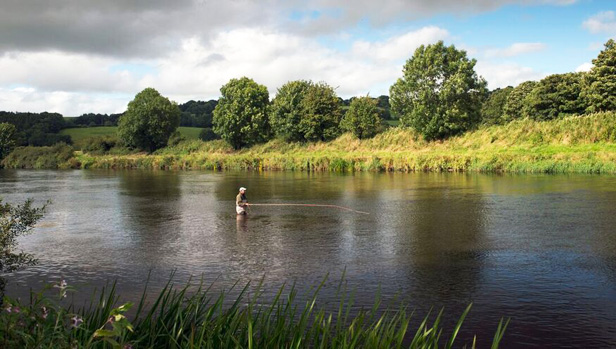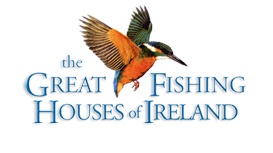

The Rivers
River Fergus
Season:
Salmon & Sea-trout: 1 February to 30 September
Brown Trout: 15 February to 30 September
Permission:
Generally regarded as free
The River Fergus in Co Clare is 37 miles long and drains a rich limestone catchment of 402 square miles, which included many interconnected loughs. It rises north-west of Corofin and enters the tide at Ennis. It is a noted brown trout dry-fly river and a worthwhile spring salmon fishery in its lower reaches. There is an 8-inch size limit for trout.
The brown trout average ¾ lb with some to 4 lb. The water is gin clear and it has good hatches of early olives, iron blues, blue-winged olives and sedges, but no mayfly. It is a noted dry-fly river. The banks are high and difficult in the middle reaches. It is tidal up as far as Knox’s Bridge at Ennis.
The best trout fishing stretches are at Knox’s Bridge; the stream opposite the Vocational School in Ennis; above and below Drehidnagower Bridge; The Cut, 1½ miles upstream of Ennis; the Upper Cut, below Templemaley Bridge; Addroon Bridge upstream to Ballyteigue Lough; Ballyteige Lough upstream to Ballyogan Bridge; Atedaun Lough upstream to Inchiquin Lough; Inchiquin Lough to Kilnaboy Bridge; and Kilnaboy Bridge, upstream to Elmvale. The banks are overgrown in places and the river runs low and becomes weeded in summer.
The Fergus is said to produce about 200 salmon and grilse every year. The best spring fishing is from opening day through February and March and anglers stand shoulder to shoulder at such well-known taking places as the Post Office Field, the Sandy Hole and The Meadow, all near the town of Ennis. The grilse come in mid June and there is always the possibility of taking one right through to September. The Fergus pools are deep and sluggish and worm fishing and spinning are the favourite fishing methods.
Excerpts taken from "Trout & Salmon Rivers of Ireland, an angler's guide" by Peter O'Reilly.

